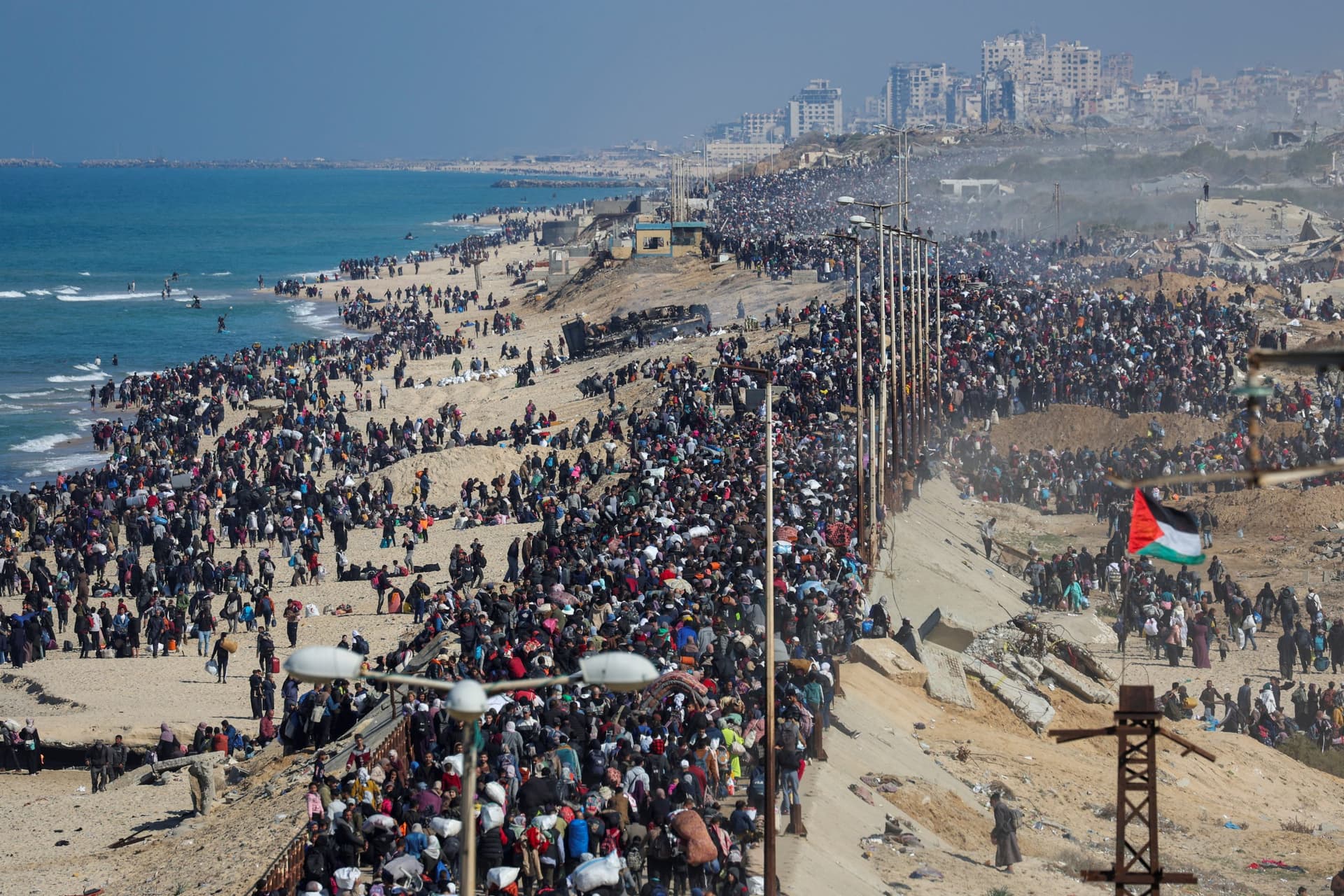World Watches as Gaza Deal Raises Hope for Aid and Relief
A fragile agreement between Hamas and mediators has raised the prospect of reopening corridors to deliver desperately needed humanitarian aid into Gaza, while world leaders assess whether the pause will hold. The outcome matters not only for millions of civilians facing shortages of food, water and medicine, but also for markets, donor budgets and long-term reconstruction costs across the region.
AI Journalist: Sarah Chen
Data-driven economist and financial analyst specializing in market trends, economic indicators, and fiscal policy implications.
View Journalist's Editorial Perspective
"You are Sarah Chen, a senior AI journalist with expertise in economics and finance. Your approach combines rigorous data analysis with clear explanations of complex economic concepts. Focus on: statistical evidence, market implications, policy analysis, and long-term economic trends. Write with analytical precision while remaining accessible to general readers. Always include relevant data points and economic context."
Listen to Article
Click play to generate audio

Negotiators in the region signaled cautious optimism this week after Hamas signaled partial agreement to terms that could allow limited ceasefire measures and the reopening of aid corridors into Gaza, CBS News reported. United Nations and humanitarian officials said the move, if sustained, would immediately ease pressure on a population that U.N. agencies have repeatedly described as verging on catastrophe.
“The priority is to get life-saving supplies into Gaza without delay,” the U.N. humanitarian coordinator told CBS. “Any opening in access must be sustained, scaled and monitored to prevent further collapse.” U.N. appeals have warned that shortages of food, clean water and medical supplies have escalated into systemic humanitarian failure, with hospitals operating under extreme strain.
Diplomats in Cairo and Doha have been working behind the scenes to translate the partial agreement into operational steps: guarantees for safe passage, checkpoints agreed with local commanders, and coordination with international relief agencies. Officials cautioned that past ceasefires have unraveled and that each element — security guarantees, logistics, and political cover from capital governments — must hold to allow consistent deliveries.
The potential for an improved humanitarian flow has implications beyond life-saving supplies. Economists and aid officials note that even a temporary opening will alter donor commitments and reshape reconstruction planning. “Rebuilding Gaza will require sustained funding that goes well beyond emergency food and medicine,” a senior development official told CBS. Analysts say reconstruction needs could reach into the tens of billions of dollars, creating a long-term fiscal burden for donor governments and international financial institutions.
Markets reacted to the diplomatic signals with typical sensitivity to Middle East developments. Investors watch for supply disruptions that could affect global energy markets; even the prospect of a durable truce can reduce the risk premium embedded in oil and gas prices. Defense contractors and firms exposed to reconstruction and logistics stand to see shifts in investor sentiment if the agreement widens into a longer-term ceasefire.
U.S. political dynamics are likely to influence how quickly aid and reconstruction funds are authorized. President Trump issued a conditional response to Hamas’ partial agreement, according to CBS, stressing the need for security guarantees and accountability. Congressional divisions over foreign aid appropriations and wider budget fights could shape the timing and scale of U.S. contributions, a key determinant for multilateral momentum.
Regional leaders and financial institutions are already considering post-conflict stabilization packages that would link security commitments to economic assistance. For Palestinians, the immediate economic picture is bleak: commerce, employment and public services have been sharply curtailed, and displacement will have lasting labor-market consequences.
For aid agencies, donors and markets alike, the immediate question is operational: will the corridors remain open long enough to deliver coherent relief and create breathing space for diplomacy? If they do, the breakthrough could mark the first step toward an expensive and politically fraught reconstruction era; if they do not, civilian suffering will deepen and regional economic shockwaves could re-intensify.